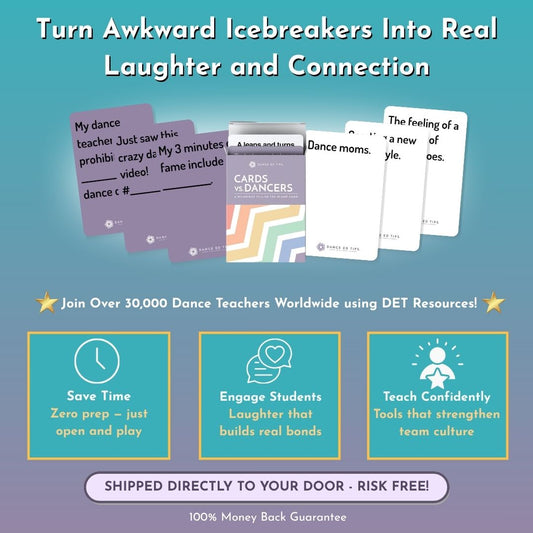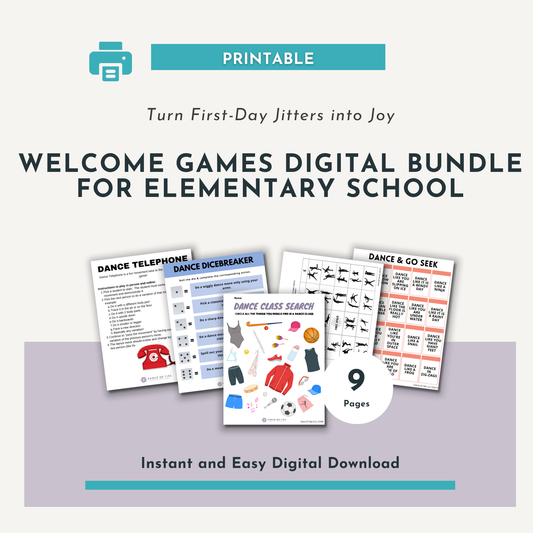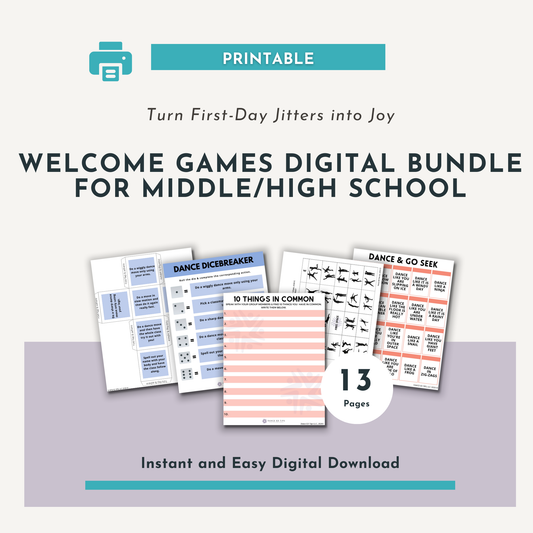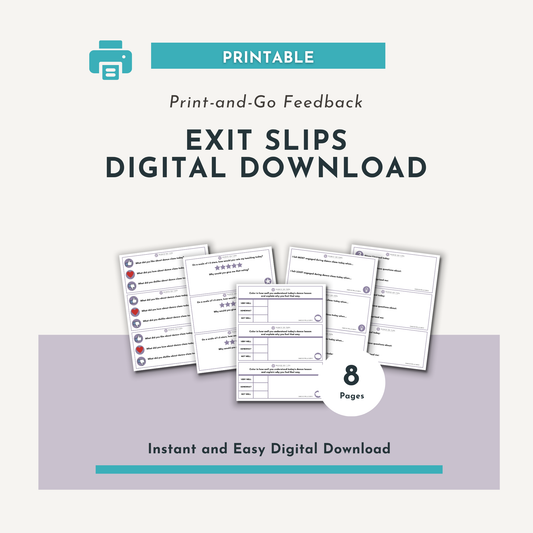By Olivia Mode-Cater
Get access to dance movement cards and tips to enhance dancer creativity in the classroom by using locomotor and nonlocomotor movements to increase improvisation in the studio.
My movement flash cards are one of the tools I use the most in my classroom! I use these in studios, K-12 schools, and higher ed. The uses for them are endless and the more you use them the more ideas will come to you. Plus, they are really easy to make!
I use my movement cards for teaching improvisation, choreography, Laban, locomotor vs. nonlocomotor movements, and many other things, but below I'm going to dive into my uses for them in improvisation. I'll revisit the other areas in later posts, but for now let us check out three ways you can use them for improvisation:
- I use the movement cards as stimuli to improvise across the floor or as a group in general space. This makes young and novice dancers of all ages feel safe, because it gives them a lot of structure. It pushes their comfort zones in improvisation and makes them embody actions that they may not normally chose (like wiggle, grow, sink, melt, explode, etc.).
- The movement cards are also a great way to jazz up freeze dance. Teachers often use freeze dance as a reward at the end of a dance class; however, once the students have learned how to stop and go based on an auditory cue they don’t gain many other skills in freeze dance. Therefore, adding the movement cards into the game pushes their technique, creativity, and problem solving. Before playing I announce to the students that the dancer that freezes the quickest and fastest gets to pick the next card. This creates lots of motivation in the class and can be a great reward for good behavior at the end of class. Another suggestion: encourage students to embody the card in multiple ways. Students of all ages can get stuck doing that action the same way over and over. Therefore, prompting them to change it up or focus on a certain body part can encourage more interesting movement invention.
- The last way I use these in terms of improvisation is to build vocabulary. As students pick and embody cards they often will stop and ask, “What does this word mean?” This especially happens with my elementary dancers and ELL dancers. Physicalizing the verb makes it stick in their brains allowing them to expand on their vocabulary.
Materials:
- Index cards
- Marker
- List of verbs
If you want to get extra fancy you can color code locomotor and non-locomotor movements. I also highly recommend that you laminate them so they don’t get bent, wrinkled, or wet in the depths of your dance bag.
Let me know how this #danceEDtip works for you and if you think of any other creative ways to use them please share!!
Happy teaching!
Olivia





